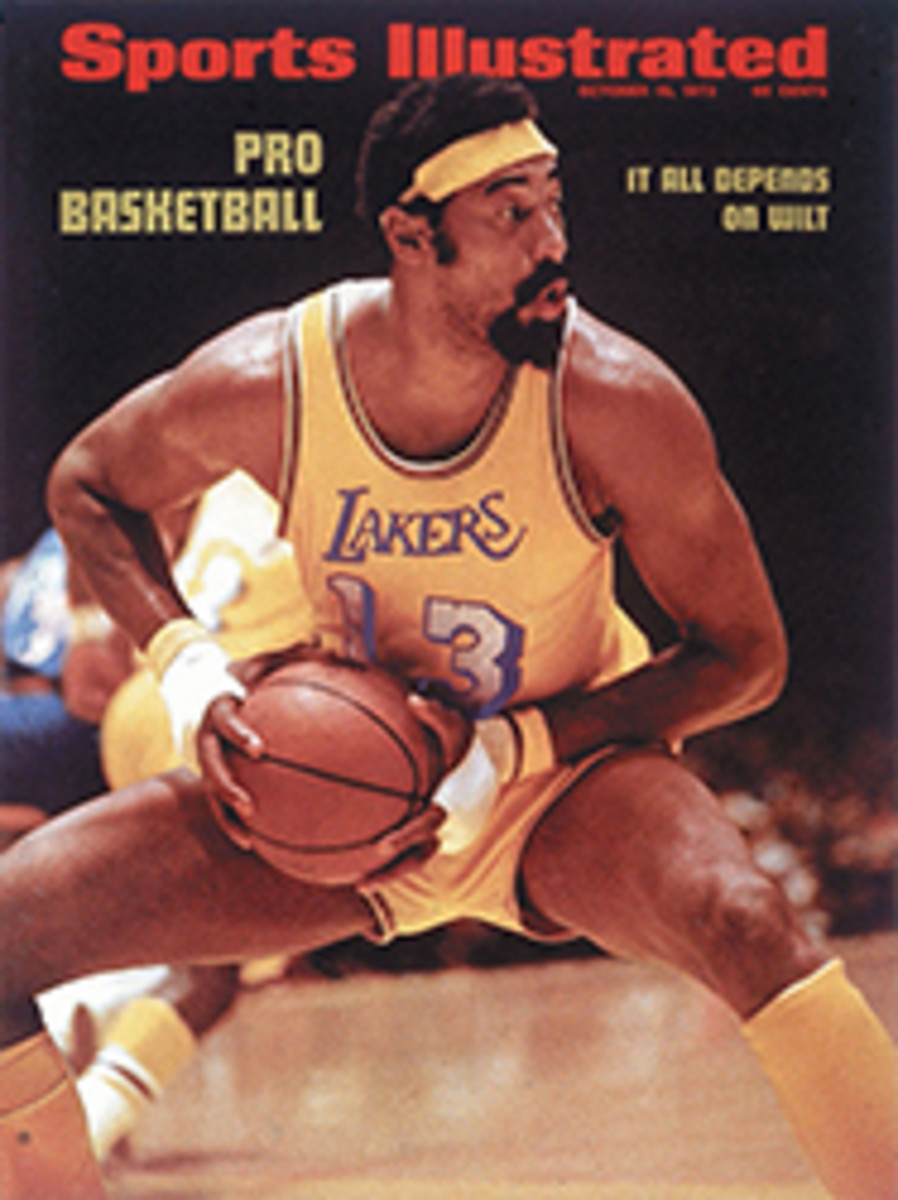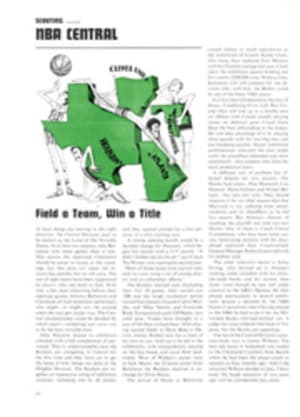
One-Shot moon shooters
For 51 weeks of the year Lander, Wyo. is a lazy frontier town of 7,123 persons tucked away along the backbone of the continent among an Indian reservation, national forests and the wilds southeast of Yellowstone and Grand Teton National Parks. Except for a desultory war whoop on payday, life is tranquil in Lander; even the wind, according to the U.S. Weather Bureau, blows less there than anywhere else in the nation.
But last month it was again confirmed that for one week each fall Lander undergoes a metamorphosis. Overnight it dons the garbs of circus, rodeo and state fair. Traffic blocks its streets, out-of-towners overflow its motels and revelers its restaurants. From all over the country and as far away as Europe and Africa, movie stars, diplomats, TV personalities, politicians, princes, financiers, socialites, industrial czars, writers, artists and astronauts descend upon Lander, turning it into the liveliest and most celebrity-studded spot in the West. For a few days, one of the zaniest contests in all sport—Lander's One-Shot Antelope Hunt—is where the action is.
Although festivities begin several days before with shooting events, sighting-in sessions and partying among former one-shotters who annually return like old grads to a college reunion, the hunt takes place between dawn and dusk of opening day of the antelope season. As the title suggests, each shooter on the various three-man teams is given a single cartridge—silver-coated. To score for his team he must down a buck antelope with that one bullet. There is no premium on the size of the trophy, but there is on how soon it is taken.
"When you know you have only that single shot," says Denver businessman John King, a member of the Colorado team in 1963, "there is a special kind of pressure. It gets worse with each hour, and it makes you overcautious. Then you become so afraid of missing that you can't shoot at all."
To his dismay and enduring embarrassment, Roy Weatherby (of Weatherby Rifle fame) had just this experience the year he shot on the California team. Even redder-faced was John Olin, one of the country's best shots, who managed to squeeze the trigger on his Winchester and then missed by a mile. Neither performance is unique at the One-Shot.
Harold F. Evans of Lander and the late Harold W. Dahl Jr. of Denver dreamed up the One-Shot Antelope Hunt more than 30 years ago. They were sitting around a campfire one evening after a day's hunting, musing about the past when the Indian with his bow and the frontiersman with his muzzle-loader stalked similar quarry through the same stretches of golden-yellow sage. The evening meal of such early hunters depended upon the skill of the stalk and the accuracy of a single shot.
The next day Evans and Dahl each took an antelope buck with a single shot. This, the first of three decades of contests between Wyoming and Colorado, ended unofficially in a draw. The following year the two men met again, this time supported by four teammates from their respective states. After the hunt, which Colorado won, a One-Shot Club was formally organized and plans were started immediately for the next year's event. Except for four years during the war, the One-Shot Antelope Hunt has been held annually ever since. Over the years the number of teams has increased, the crowds have grown larger, the celebrities have become more numerous and the rules have gradually been refined to accommodate the changes.
Shooters are now limited to three per team, and no more than eight teams—preferably only five or six—may compete. Originally, all the teams represented states and, after the first few years, were captained by their respective governors who challenged the governors of Wyoming and Colorado. More than two dozen states have fielded teams.
So much emphasis on heads of states made non-governors begin to feel discriminated against, and in 1953 a group of U.S. Senators issued its own challenge. In subsequent years their example was followed by non-gubernatorial challenges from such varied areas as industry, Hollywood, All-America sportsmen, archers, astronauts and past one-shotters.
The enthusiasm and solid support of former participants, in fact, are major reasons for the One-Shot's success. They return each year in droves—shooting jackets bedecked with patches and pins from previous hunts, rifles oiled and polished and sparkling with silver and gold and ivory inlays—greeting each other and the townspeople in noisy reunions, lured from a hundred diverse pursuits by a contest that equalizes them all.
The ever-increasing turnout of former team members led some years ago to formation of the Past Shooters Club, also headquartered in Lander. It is a separate organization responsible for many of the prehunt festivities. The One-Shot Antelope Club itself consists of the team members competing in a given year and the local citizens who run the hunt. The year after he shoots on a team, a one-shotter is eligible to become a past shooter and remains one for life.
"That's the best category," says Roy Weatherby. "There are really three stages of shooter at the One-Shot. First you come a few years as a guest, each time hoping that you will be invited to join a team the next year. You can sweat that out a long time. Then, finally, you make a team. Talk about pressure! That is when you really sweat. Rut once it's behind you, you can relax. The pressured off. The parties are on. And the pronghorn hunting is the best anywhere."
No one who has ever hunted the country around Lander will deny that. The mountains and prairies support more wild game—deer, elk, moose, bear and sheep as well as antelope—than any other sector of the U.S. Some of the finest fly-fishing streams in the state flow through its valleys, and its higher mountain streams and hidden lakes offer the kind of fishing anglers dream of. But of all the native riches, none is so bountiful as the fleet-footed antelope that prance upon its prairies.
The American pronghorn, Antilocapra americana (American goat-antelope), is technically not an antelope at all, but the misnomer is past correcting at this late date. It is a separate species, more closely related to the goat family than to the true antelope. The sole survivor of the Antilocapridae family that flourished in the Miocene and Pliocene Epochs, it is the only mammal in the world with pronged or branched horns.
The pronghorn is smaller than a deer, standing about three feet at the shoulder and weighing around 100 pounds, and much more dramatically marked than any other native species. Its cinnamon-buff coat is set off by bright splashes of white on its belly, throat and rump and accentuated by bold slashes of black on its face and cars. But beneath this fancy facade is an animal of extraordinary speed and stamina, capable of maintaining a pace in excess of 30 mph for as much as five miles and of reaching flat-out bursts of 60 mph.
At one time an estimated 50 million antelope roamed the plains from Illinois to the Pacific and from the Canadian prairies south to Mexico. By the late 1800s these multitudes had been so reduced by wholesale market hunting and the scourges of disease and decimated range that fewer than 20,000 animals carried over into this century.
During the next three decades conservationists worked frantically to strengthen the antelope's fragile grip on survival—establishing and enforcing laws for its protection, setting aside reserves and sanctuaries, refurbishing ranges, translocating herds and winter feeding.
By the early '40s several states had pronghorn populations promising enough to warrant carefully controlled hunting. Today there are some 500,000 antelope on the ranges of the West and the pronghorn is outranked only by the deer as the nation's most heavily hunted big-game animal.
The antelope gives the impression of being an easy mark. Unlike most big game, it makes no effort to conceal itself as it gambols across the open plains, but this is a hoax. The antelope may act unsuspecting—it is entitled to sonic sport, too—but only as long as the hunter is out of range. Add the fact that antelope normally travel in herds, which means many sets of sharp eyes alert for danger.
There is a tendency, because there is so little against which to gauge an antelope's size in such open terrain, to miscalculate range. The excuses for such misses are often as wild as the shots, and over the years those offered by one-shotters have become classics.
Back in the '40s Louisiana's Governor Jimmie Davis explained that he was aiming at the left eye of an antelope when, just as he squeezed the trigger, he noticed that the animal's left eye was missing. His bullet, claimed the governor, passed right through the hole and out the other side, leaving the antelope unharmed. Illinois' former Governor Otto Kerner said that the buck he encountered on the prairie was so astonished to see a Democrat that it froze, thus giving Colorado's Governor John Love, a Republican, an easy shot.
Of the many teams that have participated at Lander, no single group has been harder pressed for alibis than the astronauts, who have fielded teams since 1966. Only Wally Schirra, who competed on the Wyoming team in 1964, even came close to scoring. His bullet nicked an antelope in the hoof, giving it an unsolicited hot foot and a rocket start toward the Montana border. Schirra's story was that the animal lifted its foot to scratch its shoulder just as he fired, but this was no more credible than Deke Slayton's claim that his rifle fired before he did. Gordon Cooper, who cited inadequate target shooting opportunities on the moon, hoped that the notoriously poor performances of astronauts vs. antelope "might convince NASA that we need more time for hunting and fishing."
Either NASA was convinced or this year's astronaut team had some prehunt practice, because James Lovell, Joe Engle and Jack Swigert were all on target. For the first time in seven years the astronauts not only scored but won. All three spacemen made perfect one-shots to win the contest and the acclaim.
Governor Winfield Dunn, with an edge of five minutes, broke a tie for second place between his Tennessee team and the International Team, each of which had two antelope. A new category this year, the Voice of the Sportsmen team, consisting of three outdoors writers, downed a single antelope to take fourth place. Governor Stan Hathaway's Wyoming team and Governor Love's Colorado team tied for last place. Each scored zero.
"After all," the governors explained, "as co-hosts, it was the only polite thing to do."
PHOTO
AS PART OF THE FUN AT LANDER, JAMES LOVELL IS MADE AN HONORARY SHOSHONE

